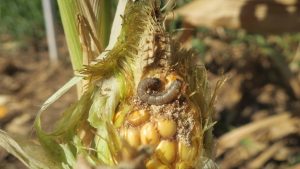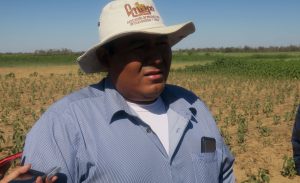
Cuatro Cañadas, Bolivia, Jul 31 (EFE).- Drought and pests have wreaked havoc on crops in the Bolivian province of Santa Cruz, producer of as much as 70 percent of the country’s food.
Of Santa Cruz’s two food-producing regions in the north and east, the latter has been hit by the worst drought in recent years.
The Bolivian Foreign Trade Institute (IBCE) told reporters that rain has been scarce in the region, a phenomenon that has affected sunflower, sorghum and wheat crops.
Agricultural engineer Genaro Cañani said that the town of Cuatro Cañadas has recorded 91-millimeter (3.6-inch) rain during this year’s planting season – which started May 14 – whereas “normal conditions” mean some 350 mm (13.8 in).
Several small farmers have seen a drastic decrease in rainfall, their crops becoming a bleak landscape of long rows of dried sunflowers, withered, worm-ridden corn and stunted wheat.

The agricultural cycle in east Bolivia normally consists of a dry season – which starts in December – and a rainy season, beginning in the first days of May.
Soy – which is the only genetically modified (GM) crop accepted in Bolivia – is the most harvested during dry seasons, while sorghum, corn, wheat and sunflower thrive during the rainy period.
“Right now, the only GM crop in this area is soy, but we (also) need wheat, corn and sorghum,” farmer Eliseo Condori told EFE.
Condori said that the region has lost as much as 70 percent of its wheat crops, which translates to some 1.5 tons per hectare (2.2 acres) against the usual 2.5 tons.
“The drought is punishing us,” Nicolas Vasquez, a farmer who moved to Cuatro Cañadas from the western province of Potosi 33 years ago, told EFE, adding that “where there is corn, there are pests.”
To make matter worse, earworm infestations are common during dry seasons, which stunts corn stalks, impeding their growth.
“Now, since there is no rain, the worm goes in and never comes out,” Vasquez said. “It lays its eggs and they hatch inside.”
